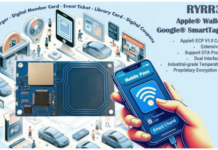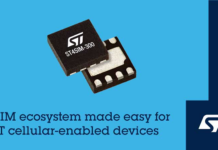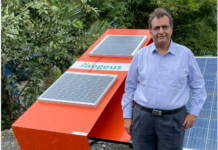
By 2020 each person in this planet will be owning at least 19 connected devices. Internet of Things, a.k.a IoT can be rightly called the Fourth Industrial Revolution of this century which will empower everyday Things, ranging from home appliances to cloud applications software and servers to interact with each other for smarter living.
The primary aim of IoT is to cut down the amount of manual errors and discrepancies that arise as a result of manual intervention. It will help businesses to sharpen their operational accuracy, improve functional efficiency and also deliver a superior user experience.
The positive impact of IoT will be visible across multiple industries including (but not limited to) manufacturing, healthcare, retail, eCommerce, power & energy management, connected automobiles among many others.
Developing mobile IoT app solutions for a hyper-connected world
IoT mobile applications are meant to serve a higher level of purpose than ordinary mobile apps. Since they function in a deeply connected ecosystem where a milieu of Things with varying hardware and software backgrounds merge into one.
Here are some things to bear in mind while IoT mobile applications:
1. Layers before the IoT mobile app
Mobile IoT apps have several layers underlying them. The first and foremost layer is the thing itself. Next to the Thing is the actuator or another Thing to which the first Thing communicates to exchange data. Thirdly, there would be a cloud server or cloud application software which will gather data from the Things.
Finally, there will be analytics to decipher the meaning from the data collected from all of the above components. A mobile iot app android can be positioned anywhere in the above levels. It can help users to trigger information or to collect data from them or even do the analytics part.
2. Choice of Platform
Mobile IoT app development being a relatively new field and with few players taking it mainstream, the choice of platform for IoT mobile app development is a tough choice to make.
Tech behemoths like IBM, Intel, Microsoft, Apple are some of the players who have placed high stakes to develop iot applications but have also developed specific platforms upon which IoT app development companies can build their own mobile apps for Iot devices.
Some such examples include:
- IBM Watson
- Google Brillo
- Microsoft Azure IoT Suite
- Apple HomeKit
3. Solve a problem
In the Digital Age, connectivity is productivity. However, for a mobile IoT app for android or iPhone to succeed in the market, it must solve a real-life problem. An IoT app that connects devices and people together is not anything great unless it solves a problem.
Some problems which IoT can solve easily include:
Manufacturing: Automating machine tracking, real-time inventory management, ensuring flow optimization, etc.
Smart cities: Automated traffic systems, smart power grids, home security systems, elderly monitoring systems, etc.
Wearables: Fitness trackers, employee safety wearables, smartwatch, etc.
Connected Cars: Personalized infotainment, usage based insurance, Vehicle 2 Vehicle communication, geo-location tracking, etc.
4. Embedding applications with security
IoT is infamous for its security concerns. Since the technology is in its nascent stages, the problem may not appear to be of serious concern now, but, in the coming years when the number of connected devices per person will multiply, security will be a serious concern with magnified impact.
This requires mobile IoT app builders to think proactively and build IoT mobile apps that are high on security. Embedded IoT devices with encryption, firmware, device safety, etc. need to be setup to ensure longer life span of the device and also user lifetime value.
In a Nutshell
IoT mobile app development is surging with every passing day. The population of connected devices is also growing in arithmetic proportions which heightens the need to build IoT mobile apps that not only connect but also deliver solutions to persistent solutions that users face. We have discussed above what it takes to build IoT applications that surprise users and solve real-world problems.
By: Sundar Krishnamoorthy
Source: iotworm.com


















